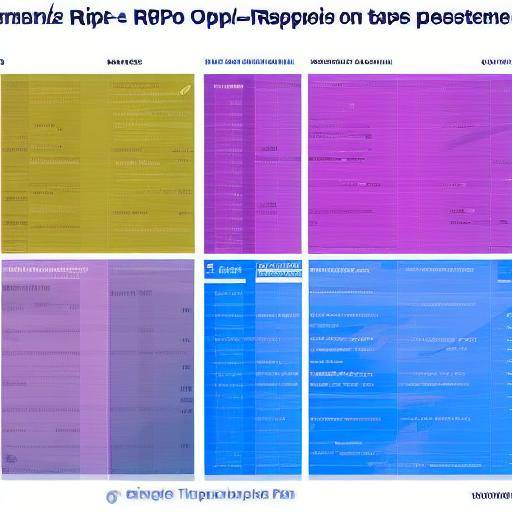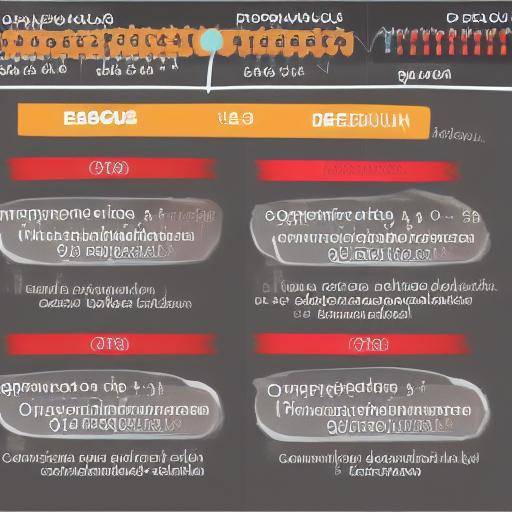
Introduction
**Are you worried about how to pay for college?**Concern about the costs of university education is a common theme for many families. Fortunately, there are options such as educational savings plans that can provide an effective financial solution. In this article, we will explore the opportunities offered by these plans, how to plan their use and impact in the future. If you are looking for ways to cope with university costs, continue reading to discover how educational savings plans can pave the way for higher education for your loved ones.
History and Background
The Origin of Educational Savings PlansEducational savings plans have their roots in the concern to make higher education more accessible. In the 1980s, various government and private programs began to emerge with the aim of helping families save for their children's university education. These plans have become a key tool for educational financial planning.
Evolution and major milestonesOver the past few decades, educational savings plans have evolved dramatically. From the first government efforts to the diversification of options offered by financial entities, these plans have adapted to the changing needs of families and students. The digitization and customization of plans are some of the most recent milestones in their evolution.
Analysis in Deep
Benefits and challenges of educational savings plansEducational savings schemes offer significant benefits, such as tax-free growth of invested funds and the possibility of additional financial assistance. However, they also pose challenges, such as restrictions on the selection of eligible educational institutions and penalties for the incorrect use of funds.
Current perspectives and trendsCurrently, educational savings plans are experiencing an increase in the diversification of investment options, as well as in the flexibility of restrictions. In addition, the emergence of incentive programmes and partnerships with other entities is creating a broader and more attractive picture for stakeholders to use these plans.
Comprehensive review
Applications and best practicesThe effective implementation of educational savings schemes can depend to a large extent on the appropriate selection of the plan and an investment strategy consistent with long-term needs. Best practices include expanding investment options and early planning to maximize benefits.
Perspectives of experts and future visionAccording to financial experts, the combination of educational savings plans with other forms of educational financing can be key to successful financial planning. Moreover, the growing importance of higher education in a competitive world makes these plans an essential tool for comprehensive financial planning.
Comparative analysis
Comparison between educational saving optionsBy comparing different educational savings options, it is essential to consider aspects such as contribution limits, investment flexibility and fiscal benefits. Understanding the differences between state and private plans can help make informed decisions.
Synergies between savings plans and other financing methodsThe combination of educational savings plans with other forms of funding, such as scholarships, student loans and student jobs, can maximize funding opportunities and minimize future financial burdens.
Practical Tips and Accessible Recommendations
Tips to maximize the benefits of educational savings plans
- Start planning and investment in an educational saving plan as soon as possible to maximize the use of composite growth.
- Regularly monitor and adjust the investment strategy based on market changes and the educational needs of your children.
- Check with financial advisors to get personalized guidance on the best educational saving strategy.
Perceptions of Industry and Expert Reviews
Expert perspectives and industry trendsAccording to financial industry experts, the trend towards personalization and flexibility in educational savings plans will continue in the future. In addition, government programmes and public-private partnerships are expected to play a key role in strengthening these plans.
Case Studies and Practical Applications
Examples of successful applications of educational saving plansConsider the case of a family that, with an effective investment strategy over the years, was able to cover the university tuition of their children without compromising their financial stability. These examples offer practical perspectives on the positive impact of educational saving plans on real life.
Future Trends and Predictions
Predictions on the future of educational savings plansAs the educational and financial landscape evolves, educational savings plans are expected to be increasingly integrated with other financial services and to provide greater flexibility to adapt to the changing needs of students and families. In addition, strategic alliances between financial and educational entities are expected to play an important role in promoting these plans.
Conclusions and FAQs (FAQs)
Conclusions
Bringing educational financial planning to the next levelEducational savings plans offer a strategic approach to ensuring financial resources for higher education. By carefully considering options, planning ahead of time and being aware of current trends, families can anticipate future financial challenges related to university education.
Frequently asked questions (FAQs)
**1. What are the fiscal advantages of educational savings plans?**Educational savings schemes offer tax benefits such as tax-free growth of invested funds and the possibility of certain state and federal benefits.
**2. Are there any restrictions on the education institutions eligible to use the funds of the educational saving plan?**Yes, some plans limit the use of funds to specific educational institutions, so it is important to consider this factor when selecting a plan.
**3. What if all the funds of the educational saving plan are not used?**Unused funds in an educational saving plan may be transferred to another family member or used for subsequent educational purposes, thus avoiding penalties.
**4. What if my child does not decide to follow higher education?**If the beneficiary does not pursue higher education, there are options to change the beneficiary of the plan or withdraw funds with certain penalties.
**5. Are additional incentive programs available for educational savings plans?**Some states and financial entities offer incentive programs, such as contributions or bonuses, to encourage educational savings.
**6. What is the role of educational savings plans in the general financial landscape of higher education?**Education savings plans play a crucial role in providing a sound and predictable financial basis for higher education, complementing other forms of funding and reducing the subsequent financial burden.
Conclusion Educational saving plans are a powerful tool to plan and ensure the educational future of your loved ones. By carefully considering options, planning ahead and being aware of current trends, you can make sound financial decisions and provide a stable basis for higher education.
With this article, readers can fully understand the options available, effective planning and impact in the future offered by educational savings plans. By navigating history, current benefits, challenges, and trends, readers get a full and practical view on how to use these plans for their advantage.
As the cost of university education continues to increase, educational financial planning becomes increasingly crucial. Education savings plans provide a sound strategy to address these challenges and ensure access to higher education without compromising financial stability. For those looking for effective ways of facing university costs, educational savings plans are an invaluable tool that prepares the way for educational success.
Start planning the educational future today with educational saving plans and ensure a bright future for your loved ones!






















































